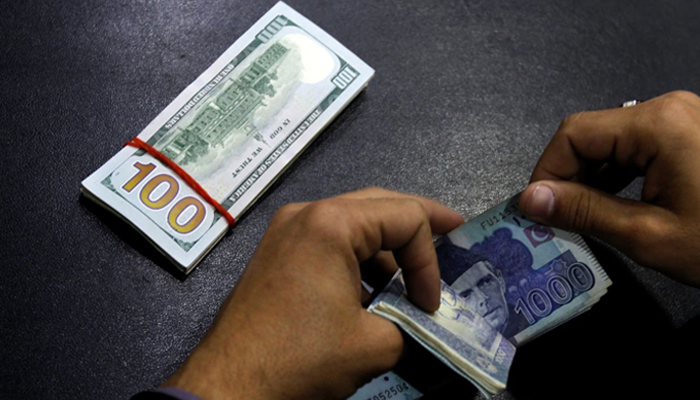Pakistani rupee breaks losing streak, gains 0.11% against US dollar
October 01, 2021

- Local currency recovers 18 paisas and closes at a one-day low of Rs170.48.
- The rupee has been under immense pressure in recent weeks due to widening current account deficit and historically high trade deficit.
- Financial experts are now eyeing the resumption of the IMF programme.
KARACHI: The Pakistani currency broke a seven-day losing streak on Friday, gaining 0.11% against the US dollar in the inter-bank market, an increase that comes after the rupee registered fresh lows in the past four days.
The local currency closed at Rs170.48, an appreciation of 0.11% or 18 paisas, according to data released by the State Bank of Pakistan (SBP).
The rupee has been under immense pressure in recent weeks, with a widening current account deficit and historically high trade deficit taking a toll on the currency.
Earlier, speaking to Geo.tv, Arif Habib Limited (AHL) Head of Research Tahir Abbas had cited geopolitical concerns — the ongoing uncertainty in Afghanistan — and the increase in international commodity prices as major reasons behind constant depreciation in the rupee value.
It is pertinent to mention that the government and the central bank are taking “proactive measures” to stabilise the rupee-dollar parity.
The central bank recently amended laws of consumer financing in order to moderate demand growth in the economy, leading to slower import growth and lending support to the balance of payments.
Abbas had predicted that the currency will now stay within the range of Rs169-170, going forward.
Financial experts are now eyeing the resumption of the International Monetary Fund (IMF) programme as Pakistan is about to begin staff-level talks with the Fund from October 4.
However, the upcoming Balance of Payments figures, and the trade numbers for September will play a significant role, going forward.











